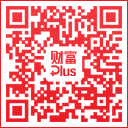精通“读心术”的可穿戴设备有市场吗?

|
艾莉尔•加藤从一开始就明白,她想打造的是一款能让人更好地思考的产品。 加藤是加拿大年轻的科技公司Interaxon的首席执行官,要设法在可穿戴设备中运用大脑控制的接口技术——也就是一种科幻小说般的技术,它能通过脑电波控制电子设备。据未来咨询公司(Futuresource Consulting)称,在谷歌眼镜(Google's Glass)和耐克能量腕带(Nike's FuelBand)的带领下,所谓的可穿戴设备市场预计将从现在的年收入80亿美元增长到2017年的200亿美元。所以用脑电波控制这些设备似乎是明摆着的事儿。 不过加藤想打造的是更有意义的产品——也就是人们能日常使用的产品,而不是什么神器,也不是什么新奇玩意儿。所以她保持观望,宁可等这个市场发展起来。这家公司全新推出的脑电波控制头带“缪斯”(Muse)售价299美元,将于今年五月开始出货。这款产品今年在消费电子展(Consumer Electronics Show)上首次亮相就大放异彩。而据加藤称,消费者和企业员工援助计划对它的预定十分火爆。这么看来,这家公司放缓进入硬件市场的策略似乎很奏效。 2009年,加藤和她的两位联合创始人特雷弗•科尔曼和克里斯•阿莫尼在多伦多创办了这家公司。创立后的头三年间,他们一直用基于脑电图描记器(electroencepholagraphy,简称EEG)的技术创造各种体验。无论是当一个人变得更放松时让他坐的椅子浮到空中,还是让参加2010年冬季奥运会的几千名观众有机会改变多伦多的加拿大国家电视塔(CN Tower)、加拿大国会大厦和尼亚加拉大瀑布(Niagara Falls)的灯光,这家公司都已经向用户表明,他们的大脑可以影响世界。 当时通过贴牌安装公司每年大概能挣100万美元。不过更重要的是,这些努力让几位创始人能深入了解人们与技术开展互动的方式,从而有助于Interaxon更好地理解如何才能将EEG技术用于消费产品。 加藤回顾了一次有人到他们实验室来做一个用户测试的情景。她说:“那是我们第一次真正测试那个算法,它能显示人什么时候是专心致志的,什么时候是紧张的。当时,受试者一分心,屏幕上就会发出哔哔一响。每次我看见这个,心就会噗通一跳。”她的团队认识到,必须为人们提供的是学会控制自己的方法。 过去两年来,这个团队基本上停掉了演示和咨询业务,专心研发“缪斯”。这是一台个人EEG设备,能将读数发送到手机或平板电脑上。加藤说:“它主要是教你如何让心灵平静下来。心态平和了,就能做更多事情。” “缪斯”的外形和传统头带很像,但它像眼镜一样搁在耳后并就在眉毛上方横跨面部。它有七个用来收集数据的传感器。加藤称,内置的应用有各种活动,它们能让人们的身心在上床休息前平静下来。很快它可能还能帮你发现自己在干活时分心的情况。 |
Ariel Garten knew from the start she wanted to make a product that makes people think. The chief executive of the young Canadian company Interaxon, Garten sought to use brain-controlled interface technology -- a science fiction-like development that allows a device to be controlled by the brain's electrical activity -- in a wearable device. With Google's Glass and Nike's FuelBand leading the way, so-called wearables are expected to grow from an $8 billion (in annual revenue) market today to a $20 billion one by 2017, according to Futuresource Consulting. Using brainwaves to control them seemed like, well, a no-brainer. But Garten wanted to create something meaningful -- something that people would use every day. Not a gadget or novelty. So she watched and waited for the market to develop. Muse, the company's new $299 brainwave-controlled headband, will start shipping in May. With a splashy debut at this year's Consumer Electronics Show and what Garten reports as strong pre-orders from consumers and corporate employee assistance programs, the company's wait to go into hardware appears to be paying off. Garten and her two co-founders, Trevor Coleman and Chris Aimone, started their Toronto-based company in 2009 and spent its first three years creating experiences driven by technology based on electroencepholagraphy, or EEG for short. Whether it was a chair that levitated into the air as a person became more relaxed or giving several thousand visitors to the 2010 Olympic Games the chance to change the lighting on Toronto's CN Tower, Canada's Parliament Building and Niagara Falls, the company showed users that their minds could influence the world. The company earned roughly a million dollars per year doing branded installations. More importantly, though, the efforts yielded insights into how people interacted with the technology, helping Interaxon better understand how to apply EEG tech to a consumer product. Garten described a day when someone came into the lab to do one of their user tests. "It was the first time we had really test-run the algorithm which could tell when you were focused and when you got stressed," she says. "There was a little bleep on the screen every time he got distracted. My heart sort of jumped every time I saw that bleep." Her team realized what they had to offer people was a way to learn to exercise control over themselves. For the last two years the team has largely shut down its demonstration and consulting operations to focus on developing Muse, a personal EEG device that sends readings to your phone or tablet. "Basically, [it] teaches you to calm your mind," Garten says. "With a calm mind, you can do more in life." Muse is shaped like a conventional headband, but it sits on your ears like eyeglasses and runs across your face, just above the eyebrows. It has seven sensors that collect data. Garten says the included application has activities on it that help to calm and settle the mind, such as before bed. Soon, it might also be helpful for noticing when your mind has wandered during a task. |













